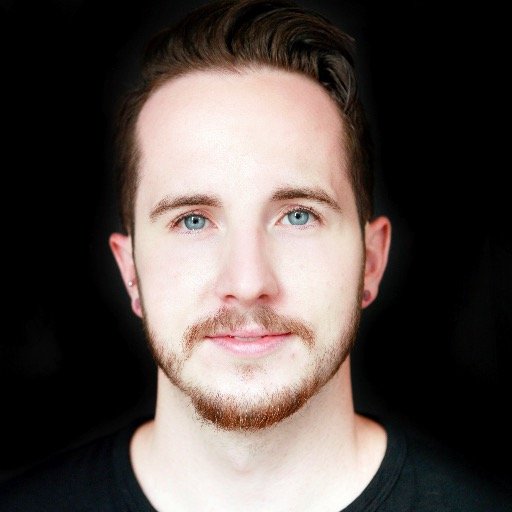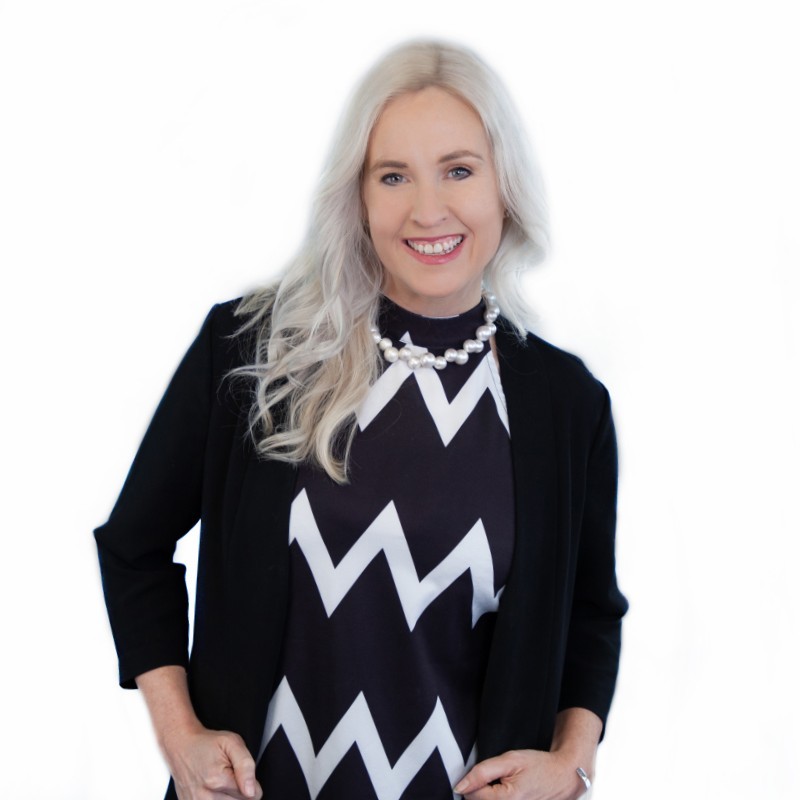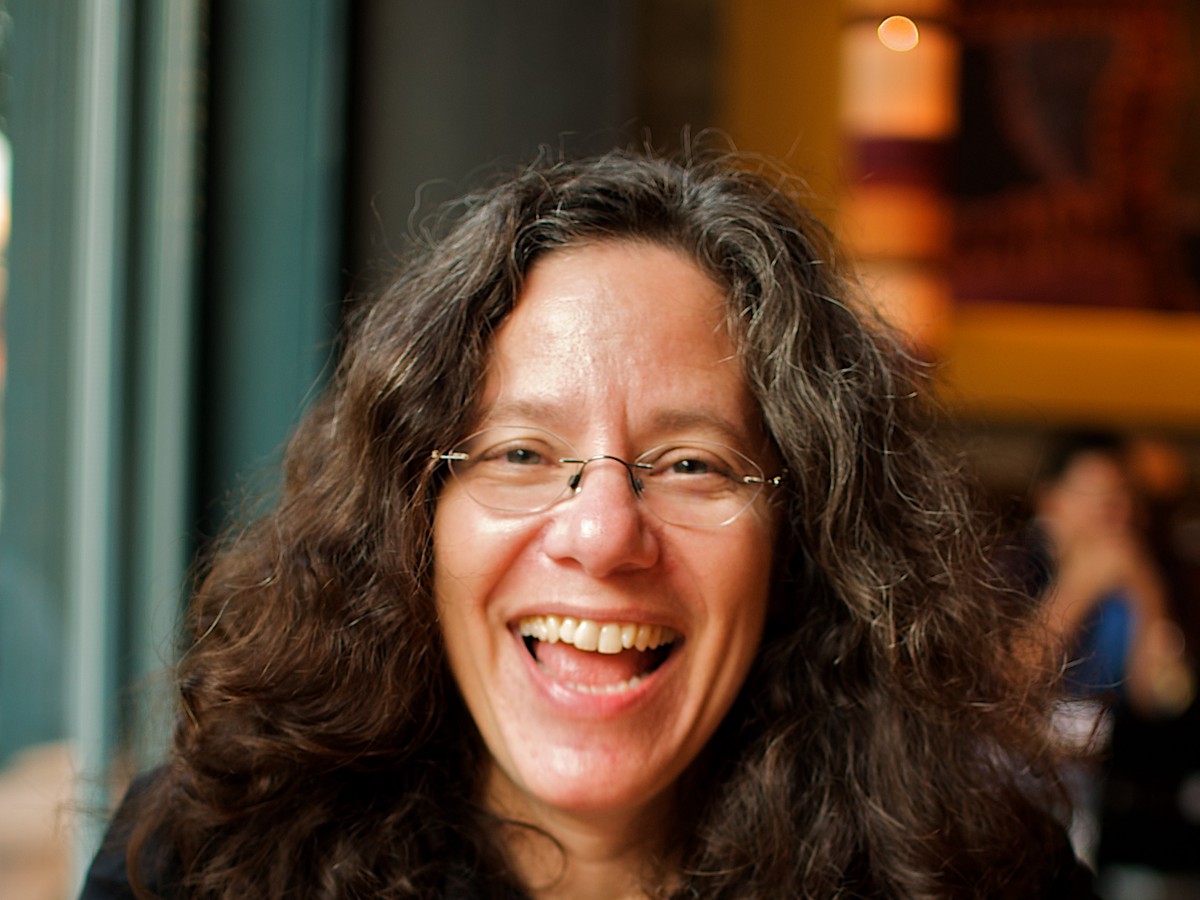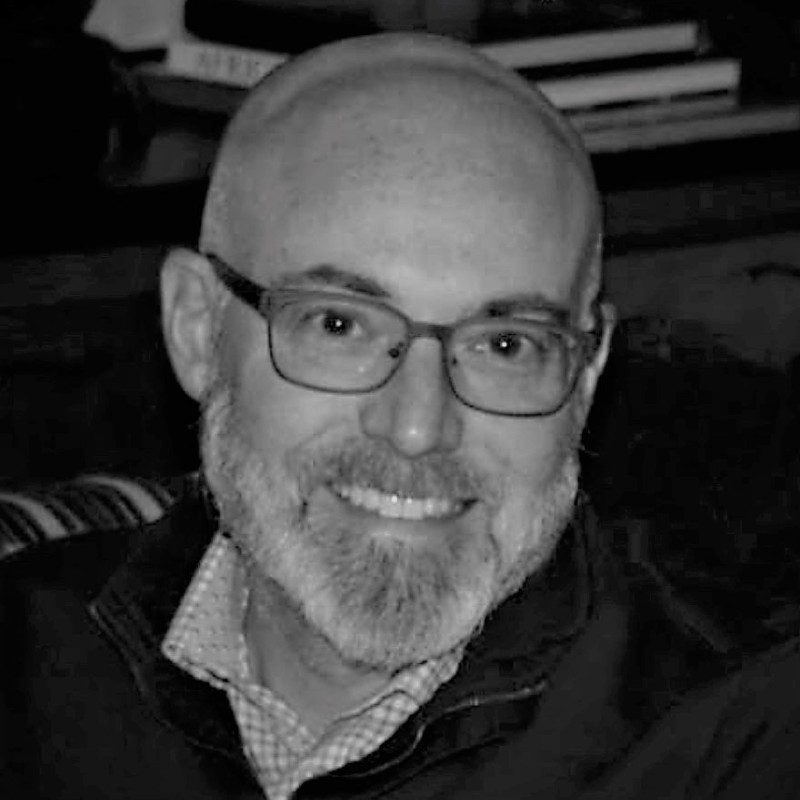We don’t all think the same way. Yet the office and our entire workplaces have been built for one kind of mind.
Joey Camire from Sylvain showed us how we need to expand the workplace to allow for many different ways of processing data.
Divergent thinking
There are many different types of cognitive processing. Introverts and extroverts have been known for a long time, but our discussion around them has matured a lot in the last decade.
There’s also those who process verbally vs. visually. Some process better in groups, and some do better alone.
Other diagnoses like ADHD and people who identify on the autism spectrum add even more variance to the types of work we should accommodate.
The impact of digital tools
Digital tools can have a very positive impact on allowing for cognitive diversity. While some people are typing on a Google Doc, others might be working on a board in Miro. When people have a flexible schedule in the day, it also allows for those who need more breaks or to recharge with a walk rather than slogging through another 6 hours.
However, not all of the digital world is great. When people are separated, there’s often a loss of collective intelligence in the room. People who relied on body language to pick up on nuance are left without much to work with.
Everyone on your team thinks differently, and the digital workplace is the perfect place to allow for and celebrate those differences.
Links
Critical Nonsense podcast
Welcome back to The Digital Workplace podcast. Today our guest is Joey Camire. He is the Principal and Managing Director of Sylvain. Hey Joey, what’s going on?
Hey Neil, how are you?
I’m doing great. Excited to speak with you. That’s a cool topic where you’re talking about divergent experiences and designing with different things in mind. But first, let’s make sure you are an actual human before we get into this. I don’t want to talk to robots. So, your question is, what pet did you have or wanted to have as a kid?
I had a lot of pets, including coming home from state fairs with roosters. I had turtles. But the pet that I always wanted all through college and never got, was a sugar glider. I somehow for some reason got into marsupial’s and was looking on forums in the old internet, sugar glider forums.
Aren’t those the things that you do? I see people walking around with a sugar glider go into their pocket and stuff like that.
Yeah, exactly. It’s like a little marsupial that looks like a flying squirrel and is cool looking and sweet and small. And that idea of having a pet in your pocket for some reason was very appealing to me when I was 21 years old.
Yeah, yeah. No, that’s good. It’s got a sweet name too, sugar glider.
Yeah exactly.
It’s like a cookie, but it’s an animal.
Yeah. My college roommates kept saying, why do you want a booger monster, and that just became a thing for about a year.
Nice. Okay, you pass. You sound like a real human. That’s cool. So, let’s get into this. You delivered a talk. You talked about a lot of divergent experiences that we need to map for in the workplace. But let’s just start from the beginning. If we look at the workplace as a whole, it’s pretty much been built for one cognitive type. So, I want you to go into that and explain the background.
Yeah, I think, we, as a company have always really valued diversity, and I think we talked about it in a lot of different ways. I think the ways that we’re having broader cultural conversations about right now around demographic and socio-economic diversity in the workplace are really important. And this doesn’t take away from that conversation but starting to have some more. Why I chose to do the talk at the Seattle International Conference event and things like that is because I think we’re reevaluating and reappraising the way in which we’re designing workspaces right now. And people are, at least in my immediate experience in the companies that we work with and other leaders of companies that I’ve been speaking to, they’re going through a pretty significant reappraisal of the way they hire people. And cognitive diversity, I think, is as important to producing high quality work on your teams as any other type of diversity.
I have ADHD, something I’ve dealt with my whole life. And that maybe is also a factor in some ways, maybe self-serving. But traditional workplaces aren’t oriented towards neuro or cognitive diversity. And I think this is something that starts as early as schools. There’s actually a lot of literature around how schools are failing young boys because of the amount of energy that they have and because there’s not a lot of diversity in the teaching staff and things are structured around sitting still all day, being quiet, low inside voices. There are great things around kinetic learning and things like that. And so, for us, the question was, how do you build an environment in which you allow people to show up and start to do the work, particularly creative collaborative knowledge work, in ways that are conducive to how they would naturally process the world.
Yeah. And like you said, I think, part of building an equitable mindset is recognizing that we used to have norms that we didn’t even speak of that we just assumed that this is what’s normal if you’re straight, if you’re white, if you’re male, if you think in a certain way, like all these things. And once you pull one out, you start to realize how many of the other ones are also affected. We talked about intersectionality a lot. Obviously, some issues like race have a deep history and a deep hurt that’s there that have gone on. But this one even especially is something that also has hurt, and people have felt marginalized by this. So, I’m glad we’re bringing it up and talking about it. So, well, how would you describe how the workplace was built for this? Who is the majority culture in this situation?
I think there’s probably two ways to think about it. I think one is, the first, at least in the professional services type of world, right, consultants, lawyers, accountants, that type of environment is largely probably oriented towards people who were successful in the traditional educational environment. People who could perform well in that quiet, highly structured, classroom environment would perform better, go to better schools, and then be able to gain access to better jobs. The secondary, more nuanced way that I would think about it is, it’s often oriented towards whoever is the leader of those companies, right? Whoever’s in charge, whether it’s a team or department lead or when you’re talking about more entrepreneurial ventures that’s designed to work around a founder, they created the company, they created the culture and the environment, and so they are going to naturally structure things in ways that are most conducive to them.
Yeah, that makes a lot of sense. Me personally, in going through school, I found that school was easy. I figured that out. I figured out the process. I did great in quiet environments. But I didn’t take the opportunities that were necessarily there growing out of that. I went to a foreign country. I was in an entrepreneurial mindset and I was not prepared for that at all. So, I felt that dissonance between how I was encouraged to be all through school, and into college, and then all of a sudden, ‘Oh, this doesn’t work anymore. Everything that I thought was going to work here, didn’t work.’ So yeah, that makes a lot of sense.
Yeah. And I think there have been moments where we’ve had some flashes of awakening around cognitive diversity. I think the book ‘Quiet’ that had come out around introverts versus extroverts, one, I think our conversations about that have become a lot more sophisticated, right? It went from this pop-psy type of thing to moving towards, like, ‘Where are you generating energy? Where are you recharging the fact that, yes, there are people on extremes on both sides, but there are people in the middle?’ And I think that was an interesting moment where people who are introverts felt the workplace in one example was designed largely for extroverts, right? Like were you loud in a meeting? Were you getting recognition? Could you sit in an open floor plan workspace and be able to thrive? That is one sort of example that popped up. And I don’t know that much changed about it.
And what’s interesting is, all of a sudden, when we moved into this distributed working environment where everyone is in different places, working from home, don’t have to go into the office, all of a sudden you started seeing these conversations pop up where extroverts were struggling all of a sudden, maybe for the first time at least within this context in the working environment, and introverts were thriving. And so, all of a sudden, I think even that as an example, as a product of the pandemic and distributed work, you saw one particular orientation on cognitive diversity all of a sudden have this moment where everyone was like, ‘Oh. I was doing really well before. And I’m doing poorly now. And I’m seeing other people that are having the opposite interaction.’
And even as we’re starting to come out of it or move into the next phase of the pandemic I guess, maybe a more appropriate way to think about it and thinking about going back to the office, people are starting to design with a more flexible mindset on what that means. Giving introverts the opportunity to work from home two or three days a week and go into the office at their choosing. A lot of companies are saying, ‘If you want to come to the office every day, great. But we’re going to make it only mandatory X days of the week’ or whatever.
And I think that flexible orientation and the way that we’re thinking about this one thing of, ‘Are you feeling you’re able to be productive in this working environment’ and giving people those options to be able to fit their own cognitive styles more effectively, because ultimately, in all of these cases, we’re trying to produce, whatever it is, tax reports, legal documents, creative briefs, new positioning, product development, whatever, and if you’re more productive in a way that doesn’t necessarily fit everyone else at your company, but you’re given the flexibility, everyone in that case wins. Right?
So, we talked about introversion extroversion. You mentioned ADHD. What are some of the other things that leaders need to be aware of? Because I think some people maybe even don’t know where to start in this discussion about how to create a workplace that is inclusive for other types of thinking.
Yeah, I think one of the places to start is opening up a conversation around reflection on these things. Because candidly, I knew I had ADHD, right. Like, clinically diagnosed as an adult, to re-diagnosed. And so, I knew that there was this breadth of knowledge and literature that I could go to, to begin to understand some aspects of the way that I process things and seeing myself in it and things like that. But there are other aspects of the way that we process the world that require self-reflection, right? No one’s going to be able to tell you about these things. You have to begin to discover them for yourself. And so, opening up that conversation within your team and within your company in a way where other people feel like they can begin to explore that and have a discussion, I think is important.
One way we did that internally was I’ve been wanting for our company to do user manuals in the past. Initially candidly, my thinking about it was more in Tuckman’s ways of working, like, we work in teams that change based on project to project. And so, how do you get through? The Tuckman’s stages are teams form, storm, norm and perform, and there’s a bunch of literature about it. But how do you get new teams through those stages by understanding each other better. But as we came into the pandemic, when we actually instituted it as a company, like, fill these things out, we’ll share them with teams when you start projects, it was about like, ‘We’re in an entirely new environment, figuring it out together. We’re not in ideal or normal settings, and we need to figure out how we want to work in this environment to be productive, and feel well, and deal with kids or other things. But that exercise, all of a sudden started to unlock, like, ‘Oh, you have a different communication style than I do.’
Me, personally, I really rely on drawing frameworks and abstract concepts and things like that on whiteboards. And I was completely oblivious to the fact that this was a very heavy tool in my tool set that I’ve been using extremely frequently until all a sudden it got pulled out. But the team going through these things and understanding how each other worked actually made them more receptive and flexible to creating a space for people. Like the teams that work with me now are like, ‘Do we need to use the Jamboard right now so you can get this thing out that you’re talking about?’ And all of a sudden, they’re actually helping me work better by being like, ‘Let’s move over to the Jamboard. You have your tablet.’ Like in some ways I’m getting my handheld which is kind of funny, but they’re almost always right.
And they’re doing those things with each other as well. Like what environments are you or what contacts or dynamics do you feel like you’re at your best? What contacts or dynamics do you feel you struggle to perform or are at your worst? What’s something someone might misunderstand about the way that you work or interact? Like, in mine, in that section, I’m like, ‘When I’m really thinking, I have an intense frowny face. And so, if I look like I’m mad, I’m not. I’m just thinking very hard.’
Yeah. We talked about Jamboards. And I think the loss of the whiteboard for some people was tremendous.
It was devastating.
Yeah. And obviously, there are some tools out there. We talked about Jamboard. There’s Mural and Miro and lots of different options that are out there, to varying degrees of success in terms of that same replication they can feel. Do you feel that the whole switch to digital workplaces is better? Tell me a few of the advantages that it gives to people with cognitive diversity and things. And what are some things we lost in that process that we have to start to find a solution for that’s not really there yet.
Yeah, I think this is one of those things where you sort of suddenly realize that nothing is the silver bullet. You had these people that were pushing on distributed work for a long time and were like, ‘We’re never going to work in an office again.’ And especially, when we first entered into distributed work in the early days of the pandemic, I think you had these people claiming victory, like, ‘See, we told you all along.’ And people were like, okay, after a few months, it’ll normalize a little bit. But I think what you’re finding now is that it’s working well for some people and it’s not working for others. And I think some of those things are, how much do you need to work independently versus how reliant are you on others? Are you an internal processor or an external processor?
I personally am an external processor. Talking through things with other people helps me to continue to push thoughts, and it’s productive for me. And simultaneously being a leader of the company, sometimes I don’t need a full half hour, 45-minute meeting with someone in order to get to those things. I need five minutes stopping at your desk. I say something to you, you say something to me, it pushes me far enough and I carry on and we both go our separate ways.
And so, I think as a leader, this ability to understand and monitor the health of your team and your organization has become a lot more difficult in distributed work. I think that’s a big part of this as well when we’re thinking about designing with cognitive diversity in mind. You need to be able to see when things are working or not working well, and the signals are just not as prevalent when you’re in distributed work. I’d seen someone talk about the workspace as an extension of a leaders’ sensory system. And that really resonated with me. And so, it requires a lot more ongoing and active conversation with your teams to see if the conditions that are getting established on different teams are working for everybody.
Yeah, that’s a great point. It’s all about, how do you build back in the signals that you used to get. I mean, even think of this like we just take for granted with our own sensory that we have, and then if you were to build a robot to have all those same senses, how many different sensors do you need to actually build in order to give that same experience? It’s mind blowing. And to recognize that we are in super early days of this. We have Slack, we have Zoom. And for most people, that’s it. That’s all they got. And so, how do you get those signals in and how do you build those in to know how people are doing? It’s a great point.
Yeah, I think even in some of those examples, like these tools that we got really excited about, to the length of faster, distributed work, increased communication, I think there’s reappraisal there too. And I think it seems, at least anecdotally and from tracking conversations online, it feels people are contending with that. And Cal Newport just wrote a new book where he was talking about this concept of the ‘hyperactive hive mind’ that is being created by the amount in which we’re communicating. And I think it’s a really interesting example of cognitive diversity, as well. Him as an individual wants very deep, isolated, flow oriented, four to eight hours a day of undistracted, uninterrupted, deep-thinking work. That’s how he performs.
That’s not right for every job and it’s not right for every individual. But I think what we’re seeing is the amount of communication that is required when you’re not together, that is textual in nature, like, chats and things like that, the pipe is just far greater in terms of the amount of data that you’re getting by being in the same space as someone else. And so, I think people are starting to realize the deficits of the distributed work environment. There’s a study that came out recently and I can share a link with it on the back of this, about how collective intelligence in rooms is something that’s been studied a ton and how groups perform really well, but that it’s not showing up in group Zoom chats.
Yeah. That makes total sense. It feels like we have lost something in that way. That’s there. Well, tell us a little bit more about Sylvain, the type of work that you guys do and how are you part of the solution to this?
Yeah, so the way that we talk about ourselves is a strategy and design consultancy. And what we work on for companies is in three areas of brand strategy and design, innovation strategy and design and organizational and cultural strategy and design. And so, the brand questions are the things that you might expect of, how does a company operate within the world? What is their orientation? And I think over the past 11 years since we started the company, people have become a lot more sophisticated about that, of thinking about a brand as a means of building cohesion within an entire organization and filtering decision making across an organization so that that unit is acting in a way that feels collectively coherent.
And then, innovation, I think, in the same way, when we started the company was thought of largely as consumer product goods, like, can you come up with a new product to put on the shelf? But it has become a lot more sophisticated as well in thinking about how do you start to build pipelines of new products, services, experiences, whatever it may be, that begin to fit and demonstrate what that company’s purpose or mission in the world is, and begin to have brand and product work together, almost in the way that Peter Drucker might have talked about, right, where Peter Drucker said that there are only two things that a company does – marketing, and research and development. And in some ways, we’re in, I guess, on the more contemporary sense, playing on both sides of those things. What is the opportunity in the market? And what can you do in that?
And the one point that I would bring up is that we are a certified B Corp. And that is an actual certification where the B Lab is auditing our books and the way that we run our company. But at the heart of it, it means that we’re putting social impact at the center of our organization in the way that we do things. And so, the way that we talk about our mission is to leverage the mind of corporations for the greater good. And so, in all of those things that we do, not in a way where we’re telling companies that they need to share our values, but we’re trying to solve problems with our values in mind and allowing people to show up on our team with their own values and solve a business problem and deliver on that, but also think about, how are you going to meaningfully improve a consumer or user’s life and how are you going to maintain an orientation towards the greater social good in that.
Yeah, we love B Corps. We’ve had a few people on the show that have talked about some of their experiences in going through that. So, it’s a great program. If you haven’t heard of it or need more exposure to it, contact Joey or other people who’ve gone through the process, because it was just really good to go through. Joey as we close out, as a leader of a digital team, what’s next for you? What’s the next thing that you want to tackle that you feel like, ‘Man, we just do not have this figured out yet’ and you’re looking for a solution? What comes to mind?
Yeah, the return is something that we’re seriously contending with and trying to take all this learning and all the conversations that we’ve had with other leaders and reading. We wrote an off-white paper at the beginning. You can find that on our website. But it has some tools and templates of things we used, just in that manner we were trying to share everything we understood at the time and hoped that people would send things to us. But the question now is, how do you build an organization that can thrive and allow people to be themselves and produce good work while continuing to try and balance this flexibility? In some ways, we’ve been more constrained than we’ve ever been in this distributed work environment and simultaneously been forced to be more flexible than we’ve ever been. And I think coming back now it’s like there are some really good things that we just weren’t doing or weren’t considering before we were forced into distributed work. And how do we take those things forward that did work that were not done earlier, like you know we were doing it wrong before. And also, what were the things that were working before that we’ve lost in that balance of not over correcting and going so far into completely distributed, completely digital.
The fact of the matter is we do what I would consider creative work in this world. We’re oriented towards business problems and human problems and things like that. But it is fundamentally like generating new solutions to new problems, and there’s something that’s lost when you can’t be together with someone or like I said before, the fatness of the pipe that is data going between two individuals is constrained. And so, that’s a big challenge that we’re dealing with now. And yeah, we’re growing too. So, growing our team and finding new talent that vibes with all of these ideas that we’ve been talking about, is an obvious challenge.
Yeah, for sure. And we talked a lot about the fidelity of the conversation like the communication around it. When you need to go hi-fi, you go full out. How do you bring in that full experience and how far can digital go in that? And, yeah, that’s a big question that a lot of people are wrestling with. Joey, it’s been awesome. I’ve learned a lot through this and really enjoyed this conversation. Where can people go, especially to sign up for the newsletter you guys put out? I just signed up for it. It’s really awesome. So, where can they go for that?
Yeah, if you go to getprogress. I think we may have changed it. Well, go to Sylvain Labs, or go to Sylvain. We changed our name and as part of that we updated a lot of URLs.
We’ll have it in the show notes. Just send me the right one.
Yeah, we also have a podcast called Critical Nonsense that you can listen to where we just talk about culture and society and things like that in fun ways.
Nice. Cool. Well, thanks so much for being on the show, Joey. We hope this is not the last time we hear from you and we look forward to including you in more conversations.
Yeah, absolutely. Thank you, Neil. I really appreciate it.
Joey is a Principal and Managing Director at SYLVAIN. After escaping from the world of neuroscience and psychology, Joey became part of the founding team at SYLVAIN in 2010. Here, he’s led innovation and brand strategy work for clients including Google, GM, Afterpay, Waze, VF Corp, Bloomberg and many more. Joey is, unavoidably, a systems thinker— assessing problems in context, making creative leaps, and intuitively connecting far flung dots. He approaches the gnarliest of challenges with a preternatural calm and focuses on the big picture. In addition, Joey serves as the host of SYLVAIN’s podcast, Critical Nonsense, and Editor in Chief of Progress Report, the non-traditional business intelligence platform created by SYLVAIN. He also spearheaded the production of our book The Dots, an in-depth study deconstructing influence for brands and institutions in contemporary culture, and our documentary Instafame, an exploration into the psychological impact of digital fame on young people.












